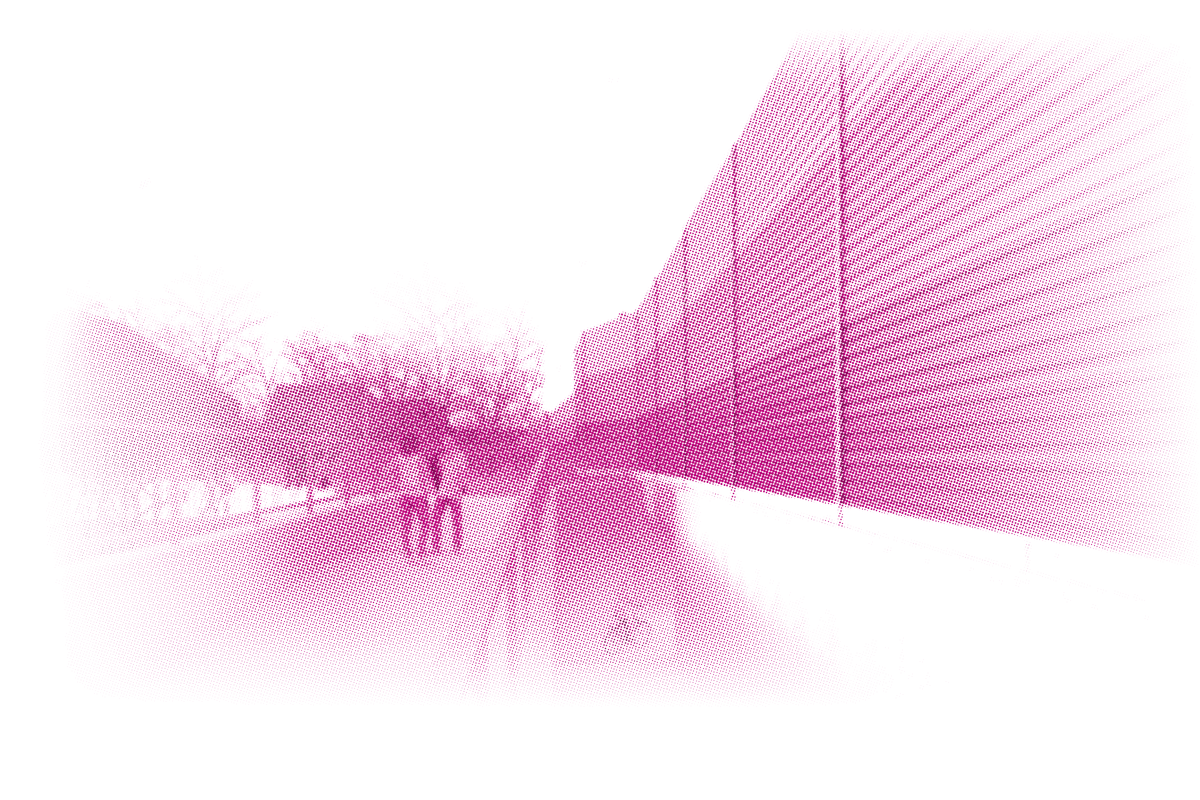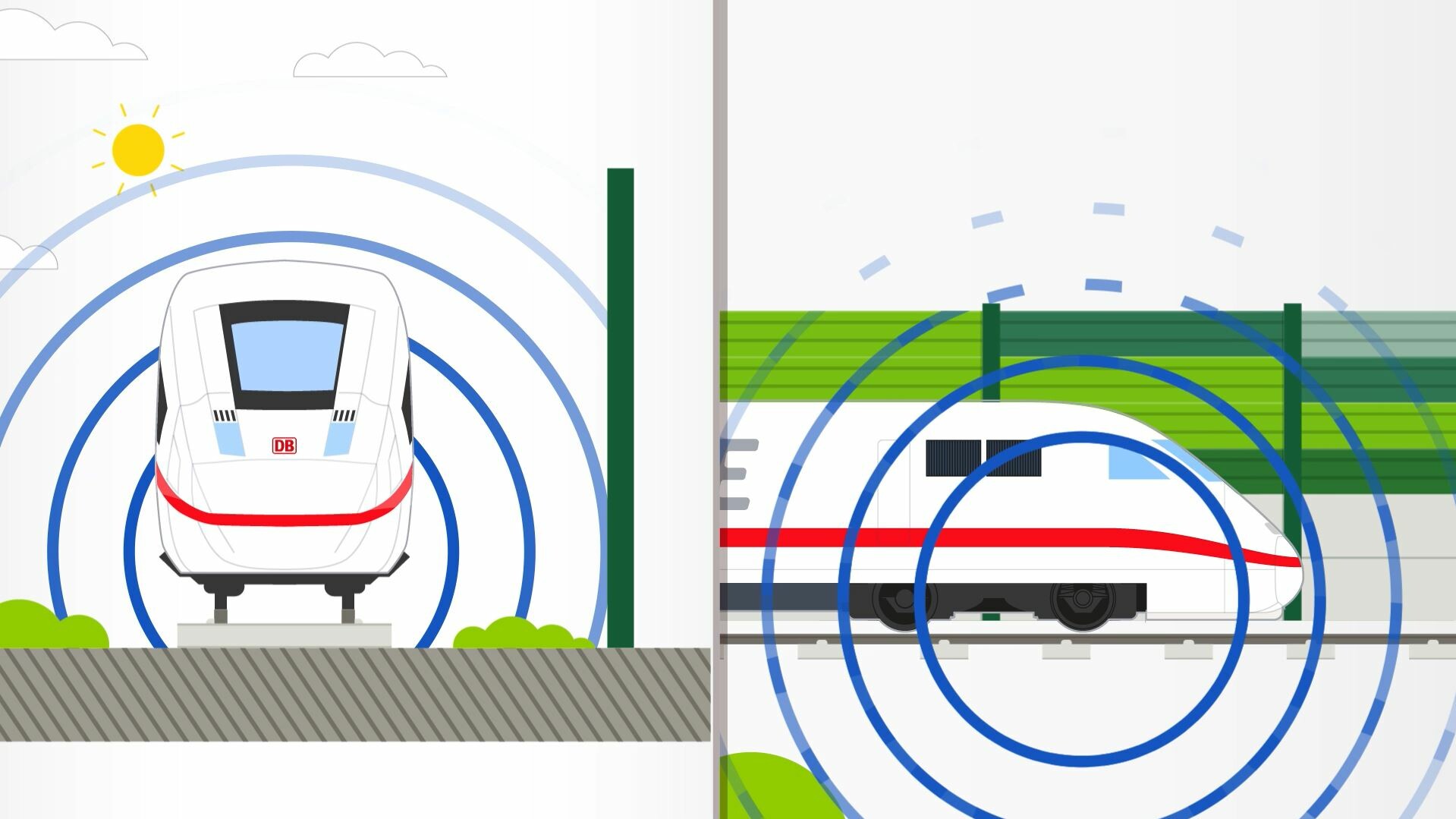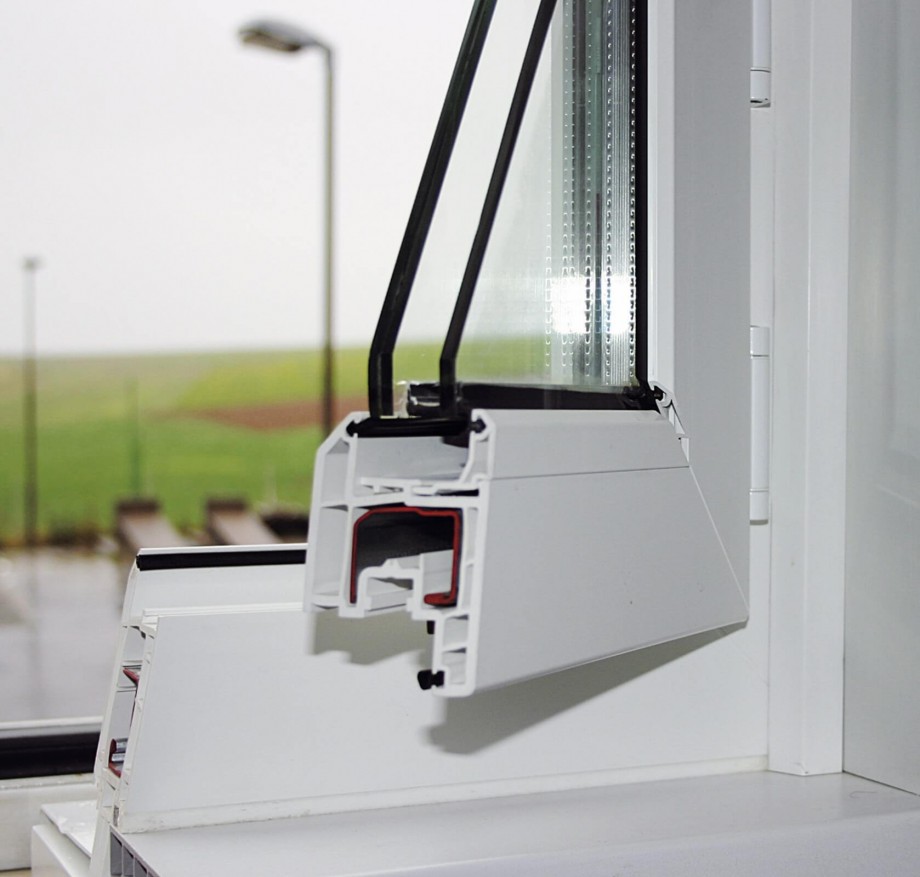Comprehensive noise control for the S4 project
We undertake noise control measures whenever and wherever people and nature need protection from the effects of rail noise. Soundproofing residential buildings and public facilities such as hospitals, schools and playschools is particularly important.
Our measures to reduce noise are based on Germany's pollution control legislation (Bundesimmissionsschutzgesetz: see the transport ministry's website for further information) and the country's guidelines for calculating rail vehicles' noise emissions. These set out rules for reducing noise when constructing new lines or making major alterations to existing ones, and they also contain binding limits for noise emissions. Independent experts carry out mandatory noise studies, and the S4 project has its own noise control expert who identifies protective measures based on noise levels at a given location.

The S4's plans include comprehensive active and passive noise control measures whose cost is currently estimated at just under EUR 100 million. Almost two thirds of this money will be invested in Hamburg, with Schleswig-Holstein accounting for the remainder. Our noise mitigation strategy includes active measures that reduce noise at the point of origin, i.e. generated by vehicles on the track. Noise barriers are our main weapon in this fight, but we will also use ballast mats under the tracks. They prevent vibrations from spreading into the surrounding area. In addition to active noise control, we will also use passive noise mitigation measures to reduce the impact on individual buildings. Passive noise control will be deployed whenever active measures are not sufficient. Installing soundproof windows is one example of passive noise mitigation.
Immission limits in dB(A)

Film about active and passive noise protection
Active noise control measures
- New noise barriers will be built along the route. The noise barriers will be designed to be highly sound-absorbent so they can minimise acoustic waves reflecting off their surfaces. You can find the latest information on noise protection options here.
- The "specially monitored track" (STM) approach will be used on many sections of the line. This entails frequently measuring and grinding rails to smoothen their surfaces, as this reduces noise generated by the contract between wheels and rails.
- Trains generate more noise on bends because their wheels press harder against the tracks as they round the curve. To reduce this, we will install special rail lubrication units in bends.
- On bridges, we will install ballast mats underneath the track bed's ballast layer. The elastic mats significantly reduce noise emissions.
Passive noise control
If we are unable to meet statutory noise limits despite our active control measures, we also make use of passive noise mitigation features, such as enhanced soundproofing for buildings.
Windows and fans are just two features that can be modified to block more noise.
More information about noise control at Deutsche Bahn is available here.

Soundproof windows are one of the passive soundproofing measures
Reducing noise pollution along the S4 route
First, we want to show you how noise levels will change along the S4 line once construction has finished (planning approval section 3 to follow). Use the slider in each image to compare current noise levels with predicted levels for 2025.
Section 1
Daytime noise levels in section 1
Comparison between 2018 (to left of slider) and the forecast when noise control measures are in place (to right of slider)



Nighttime noise levels in section 1
Comparison between 2018 (to left of slider) and the forecast when noise control measures are in place (to right of slider)



Section 2
Please note: The division of section 2 into sections A and B is not official and simply serves to improve clarity.
Daytime noise levels in section 2A
Comparison between 2018 (to left of slider) and the forecast when noise control measures are in place (to right of slider)



Nighttime noise levels in section 2A
Comparison between 2018 (to left of slider) and the forecast when noise control measures are in place (to right of slider)



Daytime noise levels in section 2B
Comparison between 2018 (to left of slider) and the forecast when noise control measures are in place (to right of slider)



Nighttime noise levels in section 2B
Comparison between 2018 (to left of slider) and the forecast when noise control measures are in place (to right of slider)



Section 3
Please note: The division of section 3 into sections A and B is not official and simply serves to improve clarity.
Daytime noise levels in section 3A
Comparison between 2018 (to left of slider) and the forecast when noise control measures are in place (to right of slider)



Nighttime noise levels in section 3A
Comparison between 2018 (to left of slider) and the forecast when noise control measures are in place (to right of slider)



Daytime noise levels in section 3B
Comparison between 2018 (to left of slider) and the forecast when noise control measures are in place (to right of slider)



Nighttime noise levels in section 3B
Comparison between 2018 (to left of slider) and the forecast when noise control measures are in place (to right of slider)



Counteracting vibrations
In addition to noise control measures, local residents will also benefit from steps to counteract vibrations generated by the S4. Innovative technologies such as padded sleepers – special concrete sleepers with a plastic coating – will reduce the level of vibrations entering the ballast bed and then escaping into the track's surroundings.
Ballast troughs will also be installed at certain locations. These are concrete troughs that serve as a foundation for special elastic ballast mats. Ballast is laid on the mats and then the sleepers and tracks go on top. The mats dampen the vibrations caused by trains because they eliminate emission frequencies that have a negative impact on their surroundings.
Diagram of a ballast trough